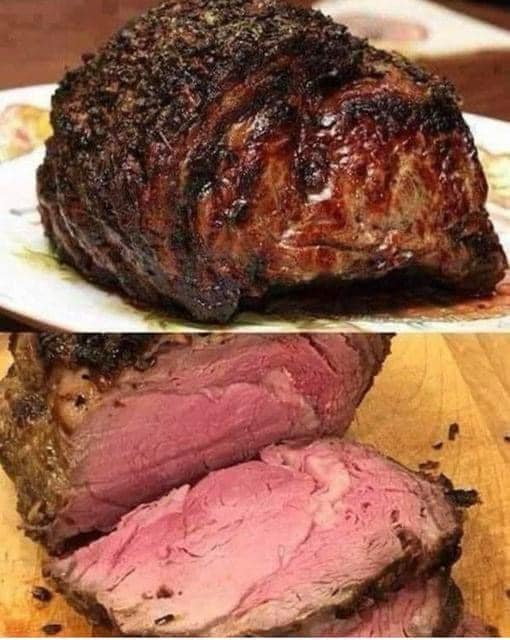Selecting the Right Prime Rib
Choosing the Cut
Selecting the right prime rib is the first step to culinary success. Look for a bone-in prime rib roast weighing between 6-8 pounds. The bone enhances the flavor and juiciness of the meat, making it a superior choice for your roast. A well-marbled cut will also ensure a tender and flavorful result.
Understanding Grades
Prime rib comes in different grades: Prime, Choice, and Select. Prime grade is the highest quality with the most marbling, ensuring the best flavor and tenderness. Choice is a good alternative if Prime is unavailable, offering a balance of quality and cost. Select is the lowest grade and might not provide the same level of juiciness and tenderness.
Buying from the Butcher
When purchasing prime rib from a butcher, don’t hesitate to ask for recommendations. Butchers can provide valuable insights into the best cuts available and might even offer to trim or prepare the roast to your specifications. Ensure that the meat is fresh and has a bright red color with creamy white fat.
Seasoning and Preparation
Basic Seasoning
Before you start cooking, season the prime rib with 2 tablespoons of olive oil, salt, and pepper. These basic seasonings enhance the natural flavor of the beef without overpowering it.
Adding Garlic
For an extra burst of flavor, consider inserting garlic cloves into the roast. Use a paring knife to make small incisions in the meat and insert whole garlic cloves. This will infuse the prime rib with a delightful aromatic flavor as it cooks.
Optional Marinades
While simple seasoning is often sufficient, you can also marinate the prime rib for added flavor. A mixture of olive oil, rosemary, thyme, and minced garlic makes an excellent marinade. Let the meat marinate in the refrigerator for at least 4 hours or overnight for the best results.
Cooking the Perfect Prime Rib
Initial Roasting
Preheat your oven to a scorching 500°F (260°C). This high temperature is essential for creating a flavorful crust on the outside of the roast.
Preparing the Roast
Place the prime rib roast on a rack in a roasting pan. Rub the roast with olive oil and generously season it with salt and pepper. If desired, insert garlic cloves into the roast using a paring knife.
Searing the Meat
Place the roasting pan in the oven and roast the prime rib at 500°F for 15 minutes. This high-temperature initial roast will seal in the juices and create a flavorful crust on the outside.
Roasting to Perfection
Lowering the Temperature
After the initial 15 minutes, reduce the oven temperature to 325°F (160°C). Continue roasting the prime rib until it reaches your desired level of doneness.
Using a Meat Thermometer
Use a meat thermometer to check the internal temperature for precision:
- For medium-rare, aim for 135°F (57°C).
- For medium, target 140°F (60°C).
- For well-done, go for 150°F (66°C).
Resting the Meat
Once the roast reaches the desired temperature, remove it from the oven and allow it to rest for 15-20 minutes before slicing and serving. Resting is crucial to retain the juices and ensure a succulent prime rib.
Serving the Prime Rib
Carving the Meat
Use a sharp carving knife to slice the prime rib. Carve against the grain to ensure tender slices. Serve the prime rib with the bone for a dramatic presentation, or remove the bone before slicing for easier serving.
Accompaniments
Prime rib pairs well with a variety of sides. Classic options include:
- Roasted vegetables (carrots, Brussels sprouts, potatoes)
- Creamy horseradish sauce
- Yorkshire pudding
- Red wine jus
Wine Pairings
A robust red wine complements the rich flavor of prime rib. Consider pairing it with:
- Cabernet Sauvignon
- Merlot
- Syrah/Shiraz

